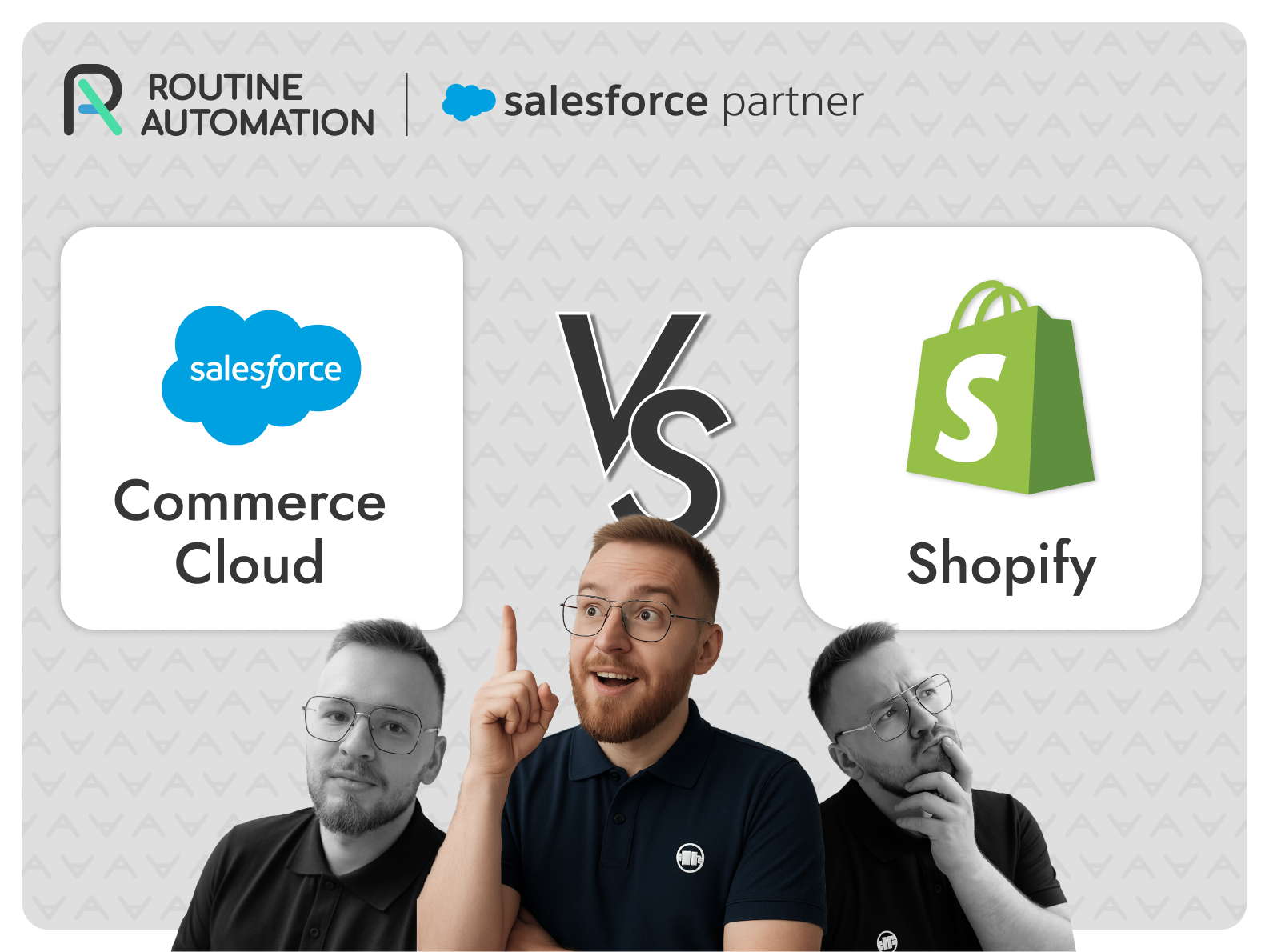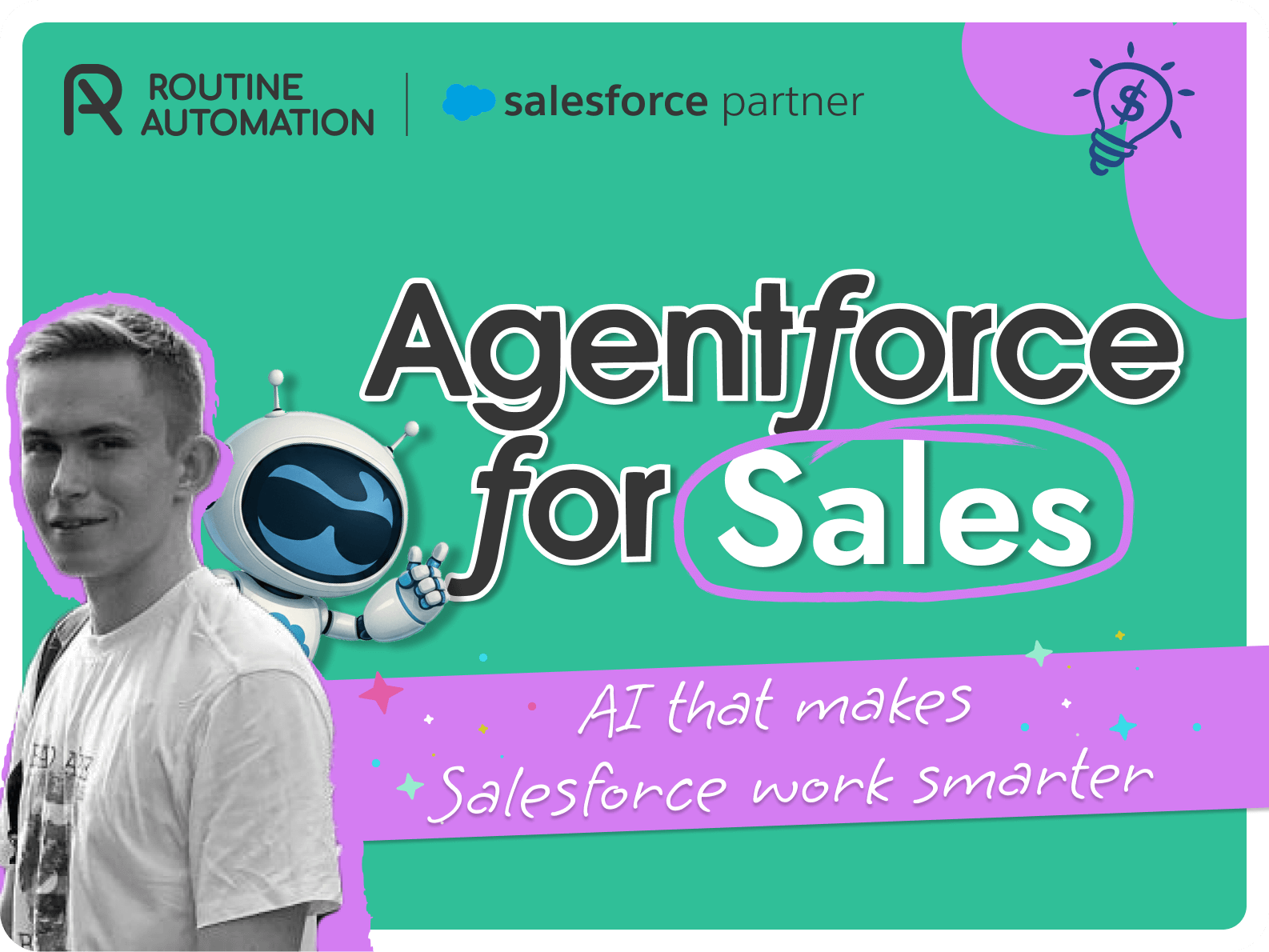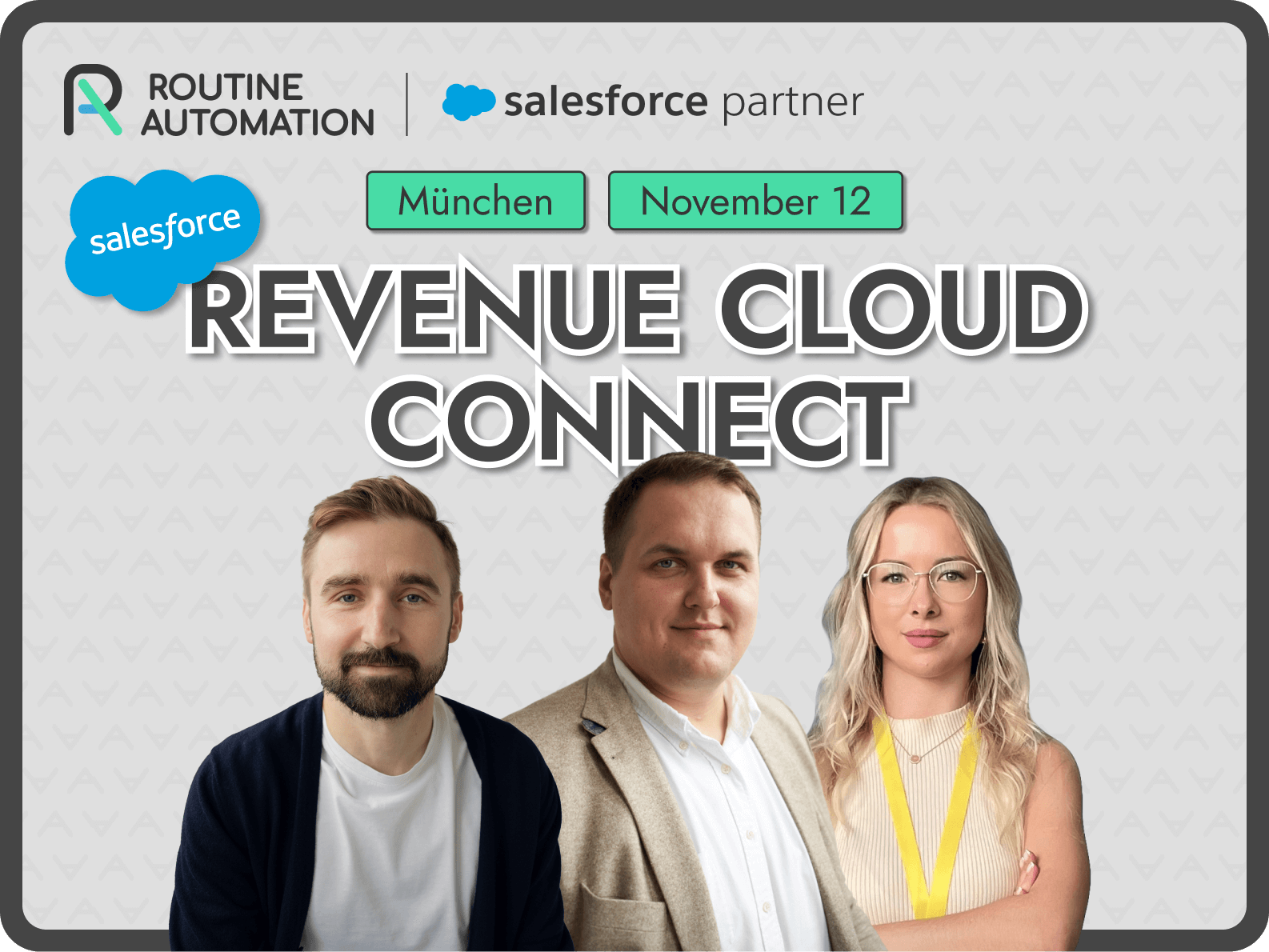7 Mistakes in Salesforce CPQ Implementation
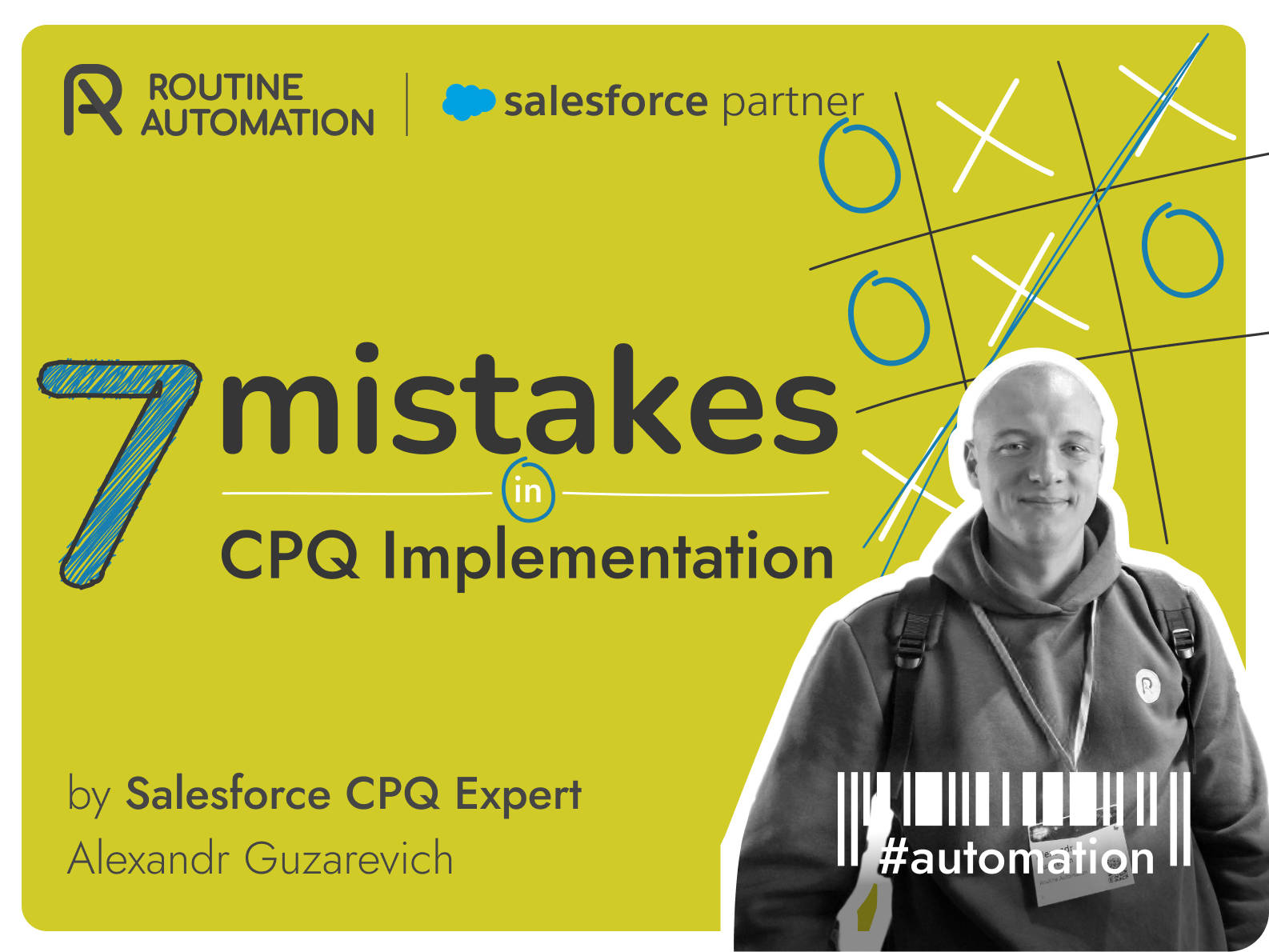
Anyone who’s been through a major implementation knows the drill – you start with the best intentions, but before long, mistakes and challenges start creeping in. Suddenly, your project is derailed, your team is frustrated, and you’re left wondering how to pick up the pieces. It’s a frustrating, but all too common phenomenon, and one that we’re here to help you overcome. But how do you avoid these implementation pitfalls? The good news? It doesn’t have to be this way.
Meet the Routine Automation Lead Salesforce Engineer and CPQ expert Alexander Huzarevich. He’s seen it all when it comes to CPQ implementations – the good, the bad, and the ugly. But today, he’s here to share his insights and help you avoid common mistakes that can cost you valuable time and money.
What is Salesforce CPQ?
Salesforce CPQ (Configure, Price, Quote) is a remarkable tool created by Salesforce to speed up generating quotes, leading to a reduced workload. Its effect can be likened to the wave of a magical wand, simplifying the sales process by seamlessly handling product configuration, pricing, and quotes.
Find more about CPQ for Salesforce in our related Article.
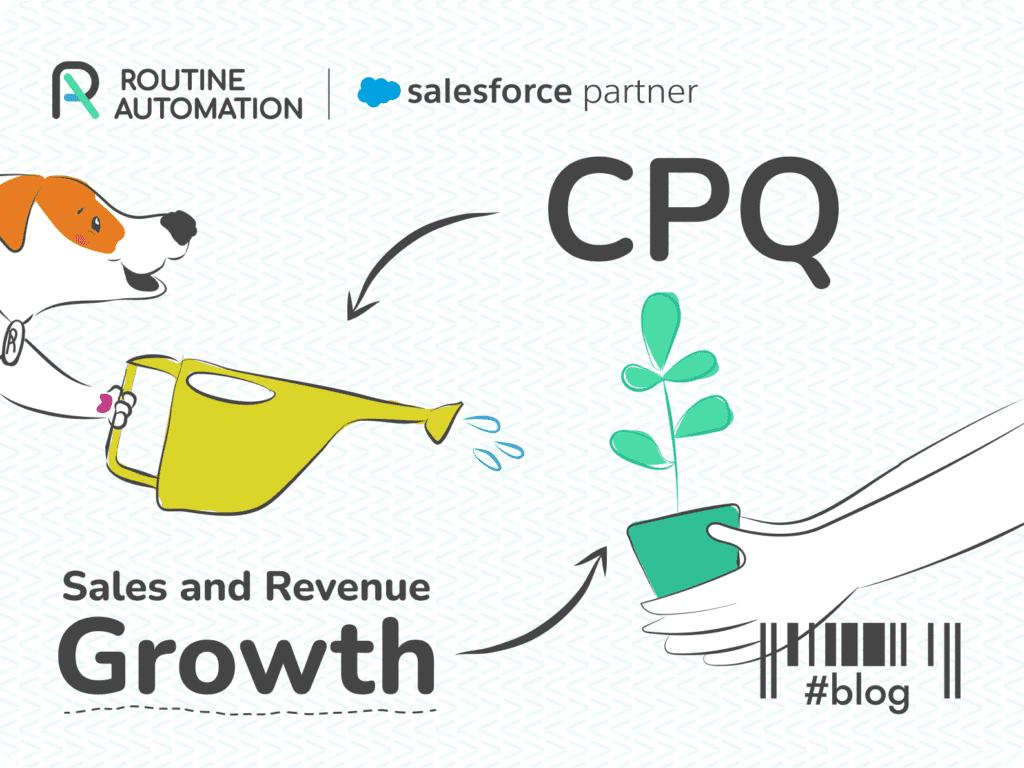
Don’t miss out on this article
Why Choose Salesforce CPQ
Mistakes to Avoid in CPQ Implementation
Avoid these common mistakes when implementing Salesforce CPQ and ensure success in your sales process.
1. Poor Requirement Gathering
One common mistake in Salesforce CPQ implementation is not properly gathering and documenting the requirements from all stakeholders. This can lead to misaligned expectations, wrong CPQ project architecture, and result in a CPQ system that doesn’t meet the needs of the users or the organization.
Tips from Alexandr: Make sure to involve all stakeholders, including sales teams, product managers, and IT staff, in the requirement-gathering process. Clearly document all requirements and validate them with key stakeholders before beginning implementation.
2. Overcomplicated Product Configuration
Salesforce Configure Price Quote allows for complex product configurations, but implementing overly complicated product models without proper planning can result in a complex and difficult-to-maintain system. It’s important to strike the right balance between configurability and simplicity to ensure a smooth user experience.
Tips from Alexandr: Simplify the product configuration process as much as possible to ensure ease of use for end-users. Avoid overly complex rules and logic that can confuse users and result in errors. Test the configuration process thoroughly to ensure it is easy to understand and use.
3. Over-Reliance on Custom Automation
CPQ in Salesforce provides its own standard tools; this can replace Salesforce automation like Apex triggers and flows and make it easier to maintain CPQ solutions for non-developer persons. An additional benefit of Salesforce CPQ tools for Professionals is that they do not use flow limits.
Tips from Alexandr: Try to use out-of-the-box functionality as much as possible and only use custom automation where necessary. This will save time, reduce implementation costs, and simplify maintenance in the long run.
4. Inadequate Data Cleanup
Salesforce CPQ implementation requires clean and accurate data to function effectively. A mistake often made is not investing enough time and effort in data cleanup before migrating data into the CPQ system. This can result in errors, duplicates, and inconsistencies in product catalogues, pricing, and quotes.
Tips from Alexandr: Conduct thorough data cleanup, including de-duplication, validation, and mapping. This will prevent errors and issues during the configuration process.
5. Limited Scalability and Flexibility
Not considering future business needs and expansion plans during CPQ implementation can result in a system that lacks scalability and flexibility, requiring additional work and cost to adapt to changing requirements.
Tips from Alexandr: Consider scalability and flexibility when selecting a CPQ solution. Ensure the solution can handle a growing number of products, users, and pricing models, and that it can integrate with other systems. Choose a solution that is adaptable to changing business needs.
6. Lack of Training and Adoption Planning
Another mistake is not investing enough time and resources in training and adoption planning. If users are not adequately trained in how to use the Salesforce CPQ system and the benefits it brings, they may not adopt it fully, leading to underutilization and lower ROI.
Tips from Alexandr: Provide adequate training to users before and after implementation to ensure adoption and user satisfaction. Create a comprehensive adoption plan that includes communication, training, and ongoing support. Involve users in the planning process to increase buy-in and adoption.
7. Lack of Documentation
Failing to document CPQ system configurations, processes, and best practices can result in a lack of knowledge sharing, making it challenging to maintain and troubleshoot the system effectively.
Tips from Alexandr: Create comprehensive documentation that covers system architecture, data models, configuration, and customizations. Keep the documentation up-to-date and ensure that it’s accessible to all relevant team members, facilitating smoother updates and troubleshooting in the future.




